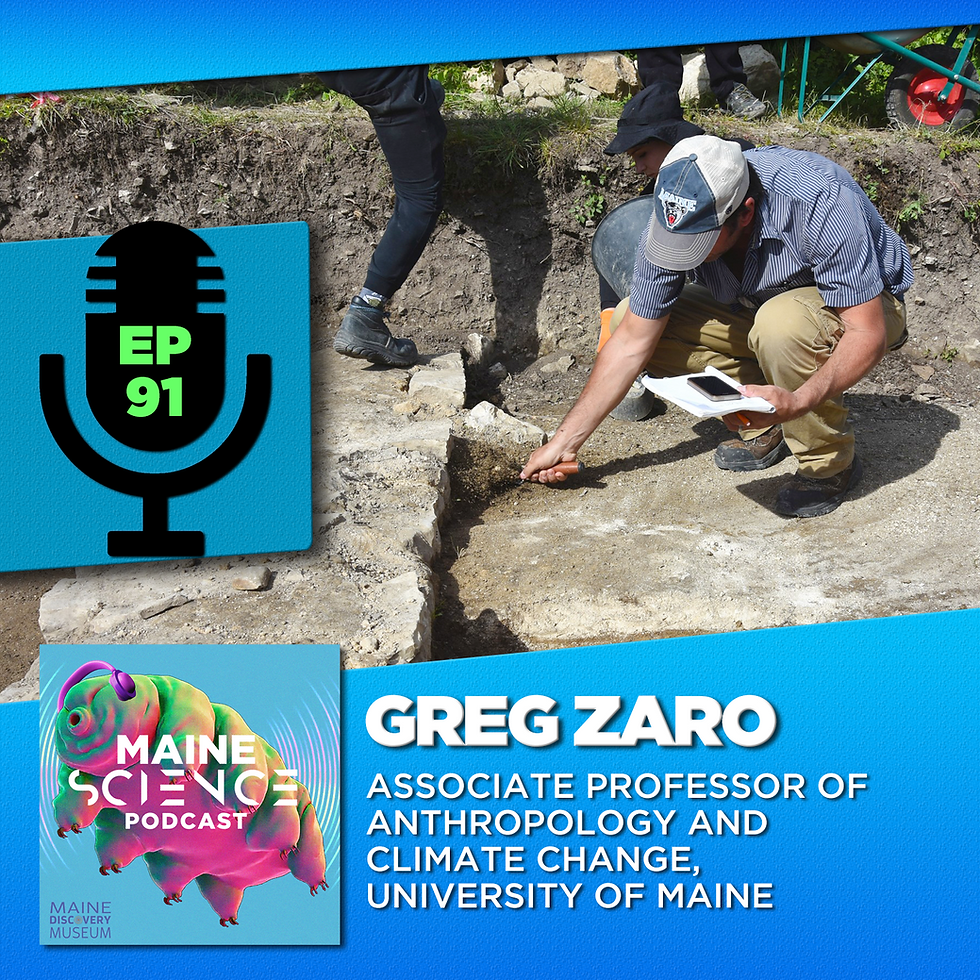Home of the World’s Worst Weather?
- Jul 29, 2016
- 3 min read
A popular addition to the Maine Science Festival each year, Science on Tap stands apart from many of the other festival offerings. Specifically designed to casually mix Storytelling, Science Education and of course the most important ingredient: beer, in a communal, late night environment. The 2016 fest boasted a strong slate of presenters, including Will Broussard, Education Coordinator from the Mount Washington Observatory who gave a fascinating presentation on why Mount Washington, in New Hampshire’s White Mountains, is such a unique environment.
Broussard has been with Observatory since 2012 after receiving a graduate degree in Conservation Biology from Antioch University New England in nearby Keene, New Hampshire. Prior to moving to there, Broussard worked in the field of place-based, environmental education throughout Maine teaching ecology and natural history to upper elementary and middle school students. With his passion always rooted in the outdoors he considers himself very lucky to have joined the team at MWOBS.
“Mount Washington Observatory is a private, nonprofit organization with about 25 staff members. Most of our staff are located at our administrative offices above the Weather Discovery Center. About a third of our staff are weather observers based at the observatory on Mt. Washington. Weather Observers work 12 hour shifts of 8 days on, 6 days off and spend their days taking part in weather observation, education and research. Weather Observers are divided into 3 roles; a Staff Meteorologist is the senior weather observer who typically works the night shift, prepares the forecast and conducts quality control of all data entered the previous day. An IT Observer maintains all electronic and computer-based infrastructure at the summit. An Education Specialist oversees all outreach and media communications taking place during the shift week. Each role tends to overlap as it is often an all hands on deck kind of operation,” said Broussard. And a fascinating operation it is.
The Mount Washington Observatory is an incredibly unique place due to its location and topography, which creates some of the harshest weather conditions on the planet within only a few hours drive of the major metropolitan areas of the Northeast U.S. Winds exceed hurricane force (74+ MPH) every other day during the winter season (Nov-Apr) and 100+ mph every 5 days during this time. The summit sees close to 25 feet of snow a year, and wind chills can approach 100 below zero. Despite these conditions, weather observers on top of Mount Washington have been continuously recording hourly weather data since 1932; providing a valuable climate record of the alpine zone of New England. Mount Washington’s setting as a natural laboratory also makes it an ideal location for product testing and research in extreme winter conditions.
According to Broussard, “Mount Washington Observatory opened its first summit museum in 1973. We opened the Mount Washington Museum in 1980 when we moved into our current space inside the Mount Washington State Park. In 2014 we reimagined that museum and created Extreme Mount Washington, an experience that gives our summertime guests a taste of our wintertime conditions. We began running educational programs to the summit of Mt. Washington via snowcat in the early 1990s, and began our outreach program in the early 2000s. In 2004, we opened the Weather Discovery Center in North Conway, New Hampshire, giving both summer and winter visitors a chance to learn more about weather, climate, and our own operations atop Mt. Washington. In 2009 we expanded our educational programs to include distance learning which allows our summit staff to connect remotely to school groups located throughout the United States and beyond. Our programs are based on the life and work of weather observers living at the summit of Mt. Washington.”
Broussard highly encourages students to take part in weather observation at their own homes and schools through programs like CoCoRaHS (cocorahs.org) and the National Weather Service Cooperative Observer Program (http://www.nws.noaa.gov/om/coop/what-is-coop.html).
“Studying the weather and weather patterns is important because weather and climate shape the world we live in. The weather is a constantly changing system, making it very difficult to accurately model and in turn forecast for the future. Having accurate, continuous data like that provided by the Observatory allows weather models to initialize better, and create a more realistic output for a weather forecast. Weather forecasts provide information that allows people to be prepared for conditions they otherwise may not be aware of, and can prevent dangerous situations from occurring during hazardous weather. Weather greatly affects industries such as agriculture, travel, communication, and business, and having a greater knowledge of our planet’s weather and climate makes us a safer and more productive society.”
For more information on visiting Mount Washington, check out: https://www.mountwashington.org






Comments